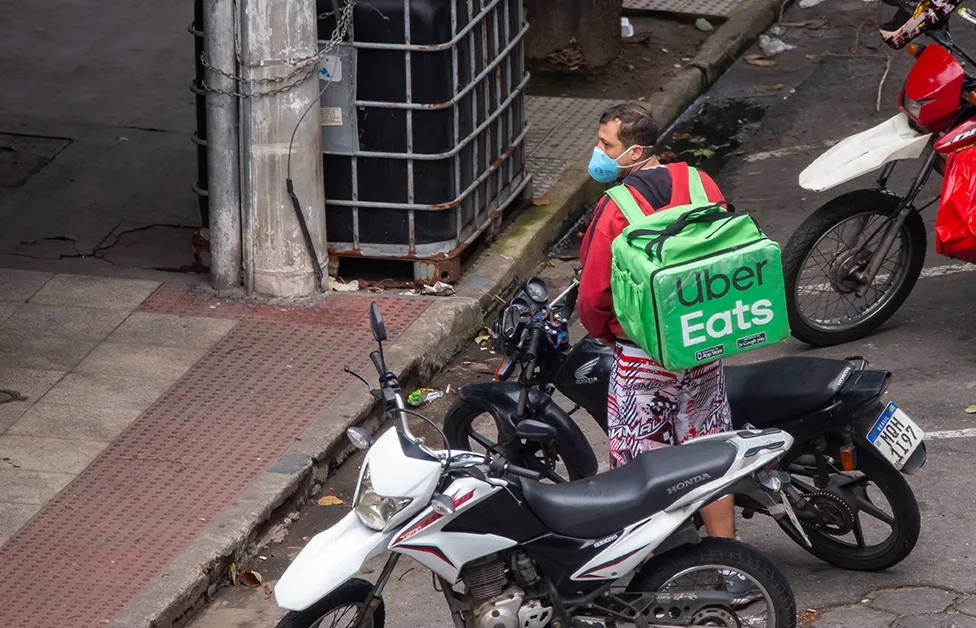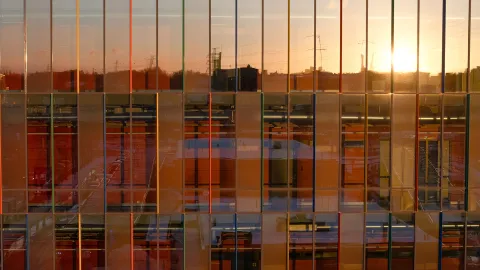Countries and Markets 3/2020: The COVID-19 pandemic slows down export – the role of export credit agencies in securing the preconditions for export increases in importance

Published date
Companies around the world are waiting to see what direction the pandemic will take and have postponed their planned investments; this also manifests as declining order books of Finnish exporters. At the beginning of the year, the volume of export credit guarantees and special guarantees granted by Finnvera was slightly over a fifth lower than a year earlier. According to the statistics of the Finnish Customs, Finland's export decreased by 17 per cent in the first half of 2020 compared to the previous year. A growing economic and political uncertainty typically increases the need for financing guaranteed by export credit agencies, and export credit agencies such as Finnvera are prepared to continue export financing for good projects.
Many countries important in terms of Finland's export, such as Russia and Brazil, have recently made the headlines due to the COVID-19 and political incidents, among other things. The same applies to Belarus, where Finland has endeavoured to launch trade in recent years. On the other hand, there are potential markets around the world to which Finland's export is minimal. One of these countries is India. There would also be demand in Argentina as soon as the country's economy gets back on its feet. Finnvera’s Country and Environmental Risk Management Team monitors the economic and political situation in these countries, among others, which are the focus of the third Countries and Markets overview of the year.
Minimal export from Finland to India despite the availability of export financing
India launched the battle against COVID-19 by implementing country-wide economic lockdown measures in March 2020. The gradual exiting from the lockdown has again resulted in an increase in COVID-19 infections since August. The International Monetary Fund (IMF) estimates that India's economy will decrease by 4.5 per cent in 2020. In the spring, the government of India announced extensive economic support package. The measures against COVID-19 will increase the country's budget deficit and also borrowing from a moderate debt level. The lock-down measures such as closing the transport hubs in the spring caused problems in foreign trade transports,. It is difficult to estimate the extent of the potential new COVID-19 measures to be implemented in the autumn.
Before the COVID-19 pandemic, India's fast economic growth was boosted by the growing technology sector, among others. The green revolution of agriculture has improved the country's food production so that India is a net exporter of food products. The income level in the country has increased, placing India to the group of lower-middle-income countries. Nevertheless, the development has been unbalanced so that the income differences between demographics and regions remain wide. Challenges related to the environment are also considerable, and the country's needs to invest in the infrastructure and the environment are enormous.
With a population of 1.3 billion, India is approaching China as the world's most heavily populated country. Measured by the World Bank's purchasing power parity, India has already become the world's third largest economy. Still, the level of trade between Finland and India is lamentably low, considering the size of the market. Finland's export to India was 0.8 per cent of the total export of Finland in the first half of 2020, and Finland's import from India was even lower. According to figures published by the Finnish Customs, the balance of trade is favourable for Finland.
The low level of export by Finnish companies to India is manifested as the fairly weak demand for Finnvera's export credit guarantees. However, Finnvera can approve even large export credits with company risk as well as credit insurance and Documentary Credit Guarantees for export trade with a short payment period, since India's country category is 3/7, meaning its solvency is sufficient. India is considered to be a country with a good credit rating, and risk assessment can be conducted on each buyer party or other risk object on commercial grounds.

Empty streets in Kolkata, India during COVID-19 lock-down measures.
Will trade with Russia retain its potential?
Russia was also hit by the COVID-19 pandemic in the first half of the year. In April–May, the GDP decreased by 8 per cent year-on-year. This was due to a double shock: the economic restriction measures and the crash of the price of oil due to COVID-19. The economy and the mobility of people were placed under extensive lockdowns in March–June. The steep decline of the ruble also affected domestic demand.
Once the restrictions were lifted, the economy started to recover. According to a recent forecast by the Bank of Finland Institute for Economies in Transition (BOFIT), Russia's GDP will decrease by 4 per cent in the current year compared to the previous year. In 2021 and 2022, the economic growth will be in the range of a couple of per cent, according to the forecast. The preconditions for growth are weakened by the demographic trends, a lack of investments and weak productivity. Additional uncertainties are introduced by the COVID-19 situation that is also worsening in Russia as well as the poisoning of the opposition leader Alexei Navalny. New sanctions against Russia are to be expected. In addition, the situation in Belarus overshadows the relations between the EU and Russia.
Finland's goods export to Russia was burdened in April–June by the steep decline in demand and the weakening of the ruble. Export declined by 32 per cent year-on-year. Export excluding the Nord Stream pipes decreased by 20 per cent. The pipes were transported from Russia to Finland to be coated and were entered as Finland's export to Russia in statistics in 2019, and this boosted the export figures at the time.
Despite the challenges of Russia's operating environment, the countries still do business. However, the land borders continue to be closed, so travel export has virtually stopped. Among Finnvera's political risk countries, Russia accounts for the largest country exposure with a country category of 4/7, indicating that its solvency is reasonable. Due to the existing sanctions, Finnvera's policy concerning granting guarantees is restrictive, which is why trade counterparties are subjected to meticulous background checks. Finnvera's exposure in Russia is approximately EUR 1 billion, and for the most part, the payment experiences have been positive.
Traditionally, financing has been a significant factor in competition in trade with Russia, in particular. When competing with others, a company that is able to propose competitive financing will win the deal. Export companies should find out well in advance what kind of financing would be optimal for each deal. A wealth of financing alternatives is available. SMEs, in particular, use credit insurance, which enables the exporter to insure their receivables and extend the buyer's payment period. In large transactions, buyer credits are used: the exporter's bank grants credit to the buyer and Finnvera grants a guarantee to the bank. A letter of credit is also a traditional instrument in trade with Russia.
Belarus' distress grows
Belarus made the headlines in the spring of 2020, as the opposition's candidates were prohibited to be nominated in the August presidential election. The presidential election was won by a huge margin by the incumbent president of 26 years, Alexander Lukashenko. The result of the election is considered fraudulent, and the EU, for example, has not recognised the result. Citizens of Belarus took to the streets in peaceful demonstrations. The president has also been accused of downplaying the COVID-19 situation. At the end of August, the official number of infections in the country of nine million people was 78,000.
Belarus can still be called a planned economy, which has primarily been kept afloat by Russia. The country has been dependent on the subsidised crude oil and gas imported from Russia. The deficit of public administration has been covered mainly by credits received from Russia. Belarus has made attempts to get closer to the EU, and at the beginning of the last decade, Belarus negotiated with the IMF on a support programme but was unable to meet the programme's requirements concerning structural economic changes.
The country has been dependent on the subsidised crude oil and gas imported from Russia. The dependency on Russia continues now that the relations of Belarus with the EU have cooled. The EU is discussing new sanctions and it is unlikely that China will appear as a provider of financing. Recently, Russian president Putin and Belarusian president Lukashenko agreed on a new USD 1.5 billion loan to Belarus, and according to estimates, the loan will primarily be used to refinance Russian loans that are falling due this year. The nature of this support is probably more political than economic. According to the Institute of International Finance (IIF), Russia accounts for 60 per cent of Belarus' debt while China accounts for 20 per cent.
The country category of Belarus is 6/7, which means that its solvency is categorised as poor. Regardless, it is the experience of Finnvera and other export credit agencies that Belarusian buyers strive to make prepayments punctually. Finnvera's exposure in Belarus consists mainly of short-term credit insurance. We will monitor the situation closely. For the time being, we may consider credit insurance with short repayment periods on a case-by-case basis.
Argentina is a potential growth market – as soon as it regains its solvency
The serious public economy debt crisis that has plagued Argentina for a couple of years has worsened further due to COVID-19 and the resulting economic slowdown and the strict lockdown measures. A repercussion of the debt crisis is that receiving financing has become more difficult for companies. The structural weaknesses of the economy are rooted in the decline of the value of the Argentinian peso, resulting from the low trust of the markets in the country's obscure and politicised financial management that has been going on for decades. The weak economic development has increased social inequality, which has motivated the changing governments to conduct populistic and short-sighted financial management – and the vicious circle is complete.
Argentina's previous government led by president Macri re-established the relations with international institutions, such as the IMF, and regained the trust of the markets. However, the country became rapidly indebted. As the peso weakened, the value of foreign currency credits grew, pushing the country into a debt crisis. Alberto Fernández, a Peronist shunned by the markets, won the presidential election a year ago and announced his intention to negotiate more reasonable terms and conditions for the national debt. The negotiations prolonged while COVID-19 made the economic situation increasingly difficult, and Argentina again drifted into insolvency.
In August, the administration finally reached an agreement on the restructuring of debt amounting to USD 65 billion with private creditors, which resulted in the country no longer being in default. This positive outcome was the initial step in the development that will hopefully help Argentina to return to the international financing market and restore trust in future economic growth. Currently, the country is in the process of negotiating with the IMF on a USD 44 billion debt restructuring and a new programme that would secure the country's solvency and create opportunities for positive development. Argentina has the preconditions needed for economic success, since the country has abundant natural resources and the majority of the population is fairly highly educated. However, the keys to a good development are held by the country's administration itself to implement the required reforms and create longer-term stability.
Argentina is a potential export market for Finland, which is manifested at Finnvera as brisk demand for export credit guarantees. Finnvera monitors the development of the country's situation closely. We hope that the budding positive development continues, which would also enable Finnvera to offer financing again. Currently, we do not grant new long-term export credit guarantees for exports to Argentina due to the high political risk and the strict restrictions on foreign exchange. Guaranteeing short-term letters of credit is still possible based on case-by-case consideration. Finnvera has categorised Argentina in the country risk category of 7/7 (extremely poor solvency).
Brazil – A strong economic foundation shields against perpetual turmoil
Based on the news, Brazil comes across as very unstable, which is not quite accurate since despite the crises and turmoil, the strong institutions, a multi-layer decision-making and the reasonably strong and diverse economy keep the country's economic development surprisingly stable. Although the country is governed by Jair Bolsonaro, a populist whose actions often make the headlines, the country's decision-making and leadership are based on independent and strong decentralised institutions. The separation of powers works and the heavy, multi-layered public sector slows down the implementation of reforms, but at the same time, they also protect against the whims of leaders that stir strong emotions. The popularity of president Bolsonaro has increased to the level of his election in polls. This is probably due to the social welfare programme that grants citizens aid for overcoming the loss of income caused by COVID-19.
Brazil is a domestic market for more than 200 million citizens. Production that is often labelled as driven by raw materials and dominated by agriculture conceals a diverse and advanced industry and a well-regulated financing sector. Export is lively, and the country's balance of trade has been enjoying record-high surpluses for a long time. Brazil is one of the countries in the world that has been hit the hardest by COVID-19, but despite a drop in the GDP – according to forecasts, a decrease of 6 per cent in 2020 – there are plenty of positive developments. Both inflation and the basic interest rates are at record-low levels (2%) despite the considerable economic stimulus packages which, on the other hand, result in the national budget showing a clear deficit. Export is brisk in agricultural products, in particular, and it is said that currently Brazil is producing food for more than a billion people.

A bank's personnel handed out protective gloves to customers queueing outside in Sao Paulo, Brazil.
The export sectors important for Finland, namely telecommunications, forestry and mining, are making promising investments in the country and no considerable drop has been visible in the payment behaviour of companies. Foreign currency reserves have remained strong, and there have not been steep changes in the value of the Brazilian real, despite its declining trend.
Trade with Brazil covers nearly a half of Finland's trade in Latin America. For Finnvera, Brazil has, for a long time, been one of the largest target countries of export credit guarantees, and the demand has not declined noticeably despite the economic slowdown caused by COVID-19. An economic growth of as much as 4 per cent is forecast for Brazil in 2021, which would be fairly exceptional for the country riddled with slow growth. Finnvera has placed Brazil in country category 5/7 (passable solvency), and the current country exposure to Brazil amounts to EUR 877 million.
Eighteen per cent of Finnvera’s valid exposure and binding offers is associated with South and Central America.



